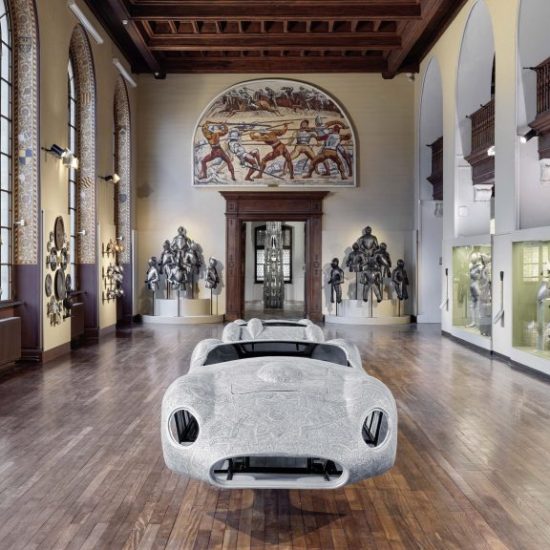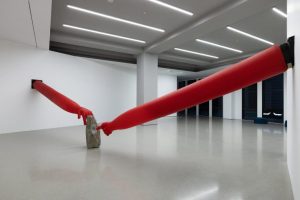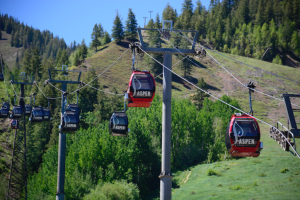For its fourth XL exhibition, the Musée d’art et d’histoire de Genève (MAH) invited Wim Delvoye (1965) to investigate the museum’s connection to its collections and institutions. The visual artist will present an original artistic and aesthetic experience that deeply explores our relationship to art and the objects around us.
Following previous artists Jakob Lena Knebl (“Walk on the Water”), who examined the line between everyday objects and aesthetic objects, Jean-Hubert Martin (“Draw Your Own Conclusion”), who questioned the practice of collecting, and Ugo Rondinone (“When the Sun Goes Up and the Moon Goes Down”), who explored the idea of transformation, Wim Delvoye’s visual and conceptual shocks seem to once again take up and orchestrate these issues in their own way. By bringing in both local and universal references and orientations from art history, Delvoye short circuits mental categories that sieve and narrow our judgements and perceptions, blurring the lines that limit our understanding of things.
One can say that Wim Delvoye is an artist who is passionate about things, artefacts and whether they are recognised artworks or simple objects. “He has extraordinary knowledge about art; it’s deeper than that of most artists. He’s a great collector, for example, of numismatics and Chinese photography,” MAH director Marc-Olivier Wahler emphasises. “He’s also passionate about seeking out things in hidden corners that people may have forgotten, and this fascinates me.”
When the artist’s appetite encountered the incredibly rich storerooms of the MAH, the idea of an exhibition arose. Pieces from the museum’s collection will partake in a game of reflection and contrast with pieces by Delvoye himself. The material accumulation, the mania of collecting, and the effects of formal and aesthetic echoes that emerge through the presentation all create a very tenuous narrative that visitors are invited to weave for themselves, but which also allows for a questioning of the seemingly impenetrable boundaries that divide art objects and everyday objects. In this joyous and playful profusion of objects, references and interventions that the artist presents as what he calls “elegant vandalism,” it is nevertheless possible to go down many roads.
Deviations:
One of the constant thrusts of Wim Delvoye’s work is tearing one thing from its primary logic, stripping an object of its original context and transplanting it in a quasi-magical manner to another context of reality. Icons and popular figures suddenly appear amid gates and doorways that neither enclose nor circumscribe any space. For instance, a Picasso becomes an obstacle that a giant set of marbles delights in piercing, the apparition of a strange figure suckles at the breast of polychrome religious sculptures, and cases are in dialogue with coffins. In this context, the bringing together of revolvers and madrier planks from the MAH’s arms and armoury collection with the artist’s famous tyres creates a symbolic value; it embodies the desire to detonate frontiers and certainties. Museum practices and contemporary art, our practical and aesthetic hierarchies, and our visual habits are toppled, diverted and set without direction. Deviations provoke, captivate and seize our attention, and, in the case of Delvoye, they often have massive repercussions in the media. As Wahler stresses, “It’s his deep motivation that art, in his hands, comes to belong to all systems—economic, scientific, pataphysical, to popular culture and so forth.” Moreover, it’s in this spirit that the MAH, Delvoye and the Laiteries Réunies Genève have partnered. Works from the museum’s collection and works by the Belgian artist will soon embellish the lids of millions of small coffee pots de crème found in many Swiss homes.
Reversals:
There are essentially two kinds of reversals. We notice the conceptual collapses immediately: Delvoye’s obsession with everything often deemed banal, vulgar or trivial has brought about a genuine re-enchantment of the ordinary. He directly approaches this material with the most aesthetic references and skills in art history and craft. For example, a room exploring horror vacui, the practice that covers a surface until it’s saturated, offers a way to conjure the fear of empty space. A fully engraved car’s body, reminiscent of etching, creates dialogues with morion helmets worn by the Swiss army, highlighting several visual interpretations of the fundamental human need to ensure physical integrity. But these reversals are also physical. They create an expectation from the contents, from what must be jealously guarded and conserved, and they challenge our aesthetic hierarchies. In this way, objects that seemingly have minor or circumstantial value—our judgements of taste even disregard them—can, once placed in a new context, say a great deal about us, our fetishes and our obsessions.
Collections:
There is no set trajectory imposed through the profusion of lines, volumes, objects and echoes that the artist orchestrates; there is no “great narrative” constraining the visitor’s step or eye. Instead, there is a reflection on the very idea of the collection, on the limits and beauties of the gesture of accumulation. A collection might, therefore, be motivated by formal resemblances. In this way, certain pieces by Tinguely resonate with clock mechanisms or a fragment of the original Cloaca, now a cult statue, returned to its primary, purely mechanical nature. In terms of accumulation, collection and possession, where does passion end and pathology begin? Delvoye asserts himself as an artist between Diogenes and Prometheus, between cynicism and the sublime, drawing on art critic Eric Bracke’s formula. He is an aesthete who is forever exposing us to the ever-changing reality of nature, so fragile in certitude yet seemingly solid that it presents the same twists and distortions he applies to certain masterpieces of art history.
at The Museum of Art and History (MAH), Geneva
until June 16, 2024




